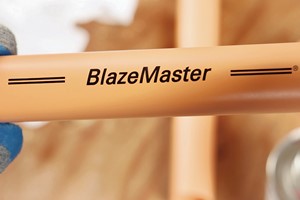As the demand for sustainable architecture rises, insurance experts are urging construction companies to carefully assess the fire risks associated with living walls and green roofs. These eco-friendly features, often integrated into modern building designs, are becoming more popular. However, the materials used in these systems may pose serious fire safety concerns.
Lee Musgrove, an expert from insurance broker Lycetts, highlighted the growing need for fire risk management in these installations. “With the surge in green roofs and living walls in contemporary architecture, addressing fire risks associated with the materials used in these systems is essential,” Musgrove emphasized. Even when cavity barriers are installed properly, certain materials could still be combustible, increasing the likelihood of fire spread.
Non-Combustible Materials Crucial for Safety
To mitigate these risks, Musgrove recommends using non-combustible materials for the backing walls, insulation, and supporting structures of living walls. He also stressed the importance of careful consideration of elements such as potting, irrigation, and drainage systems, which could impact the safety and insurability of the building.
Severe weather events, including potential water leaks, can weaken the structure and spread risks to adjacent buildings if not properly managed. He also encouraged structural engineers to assess the load-bearing capacity of the building during the design phase to ensure it can support the additional weight of these green features.
Green Roofs: A Unique Set of Risks
While living walls present specific challenges, Musgrove pointed out that green roofs have their own set of risks. These roofs are significantly heavier than conventional ones due to the added weight of plants, irrigation systems, and the support structures required. Heavy rainfall further exacerbates the risk, increasing water retention and creating potential structural issues.
To mitigate these risks, Musgrove recommends post-installation water tests to check for leaks, as well as the installation of electronic leak detectors for ongoing monitoring.
Importance of Early Insurer Consultation
Musgrove advises construction firms to consult insurers early in the design process to better understand the risks. He also stressed that regular maintenance is crucial to keeping living walls and green roofs safe and insurable. Annual inspections should be conducted to remove problematic plants and identify any risks that may arise.
“While living walls and green roofs offer numerous benefits, including environmental, aesthetic, and health advantages, their maintenance can be both challenging and costly,” Musgrove said. “Companies must balance their sustainability goals with safety considerations to ensure the long-term viability of these features.”
Managing Fire Risks in Vertical Gardens: Key Takeaways
Experts are calling for construction companies to assess the fire and structural risks posed by living walls and green roofs, focusing on the use of non-combustible materials, rigorous testing, and early insurer consultation. Regular maintenance and inspections are necessary to ensure safety and insurability, especially considering the potential risks from weather-related factors and irrigation systems.
By balancing sustainability with safety, construction companies can create both eco-friendly and secure buildings.
By Iain Hoey














